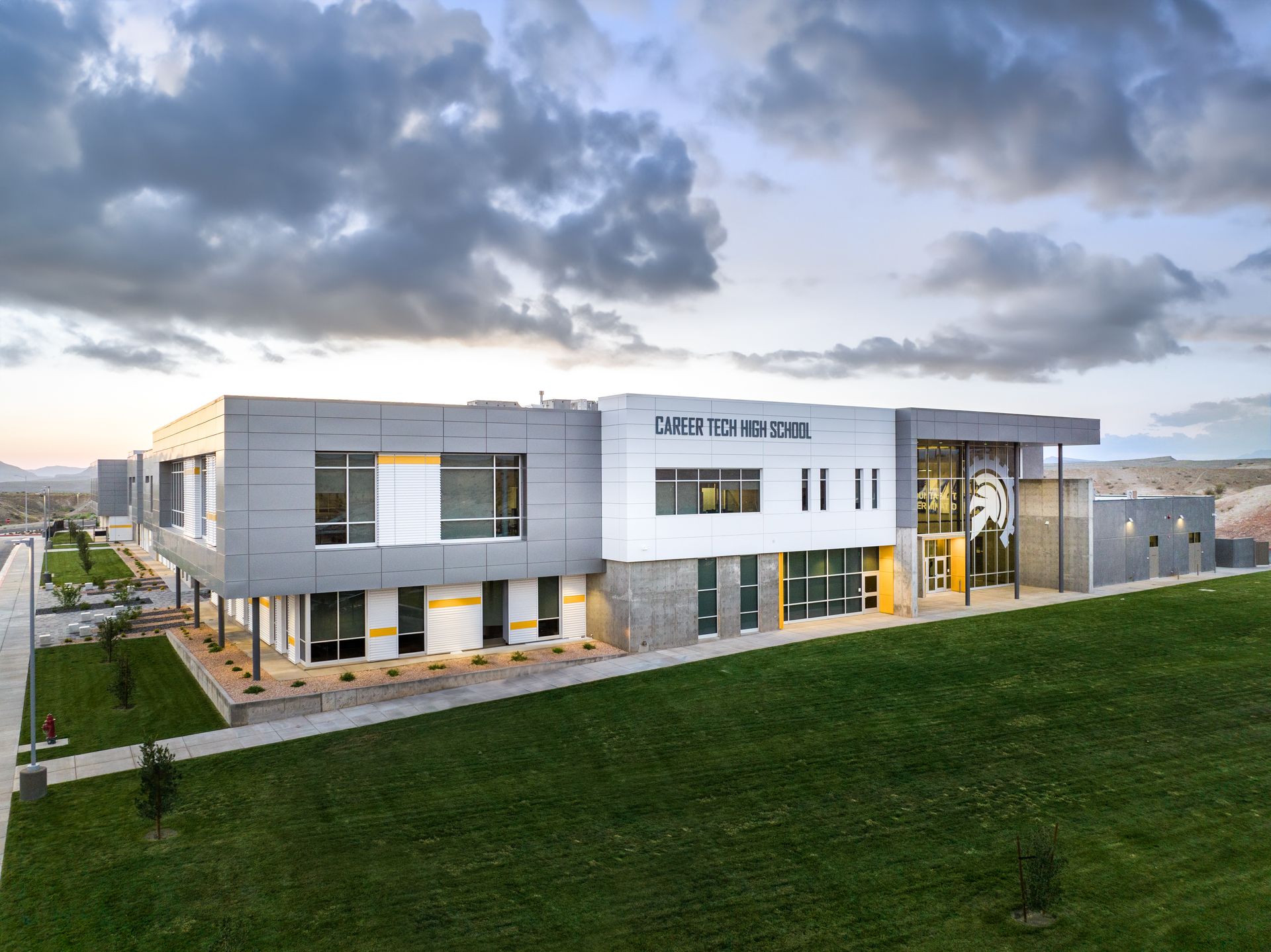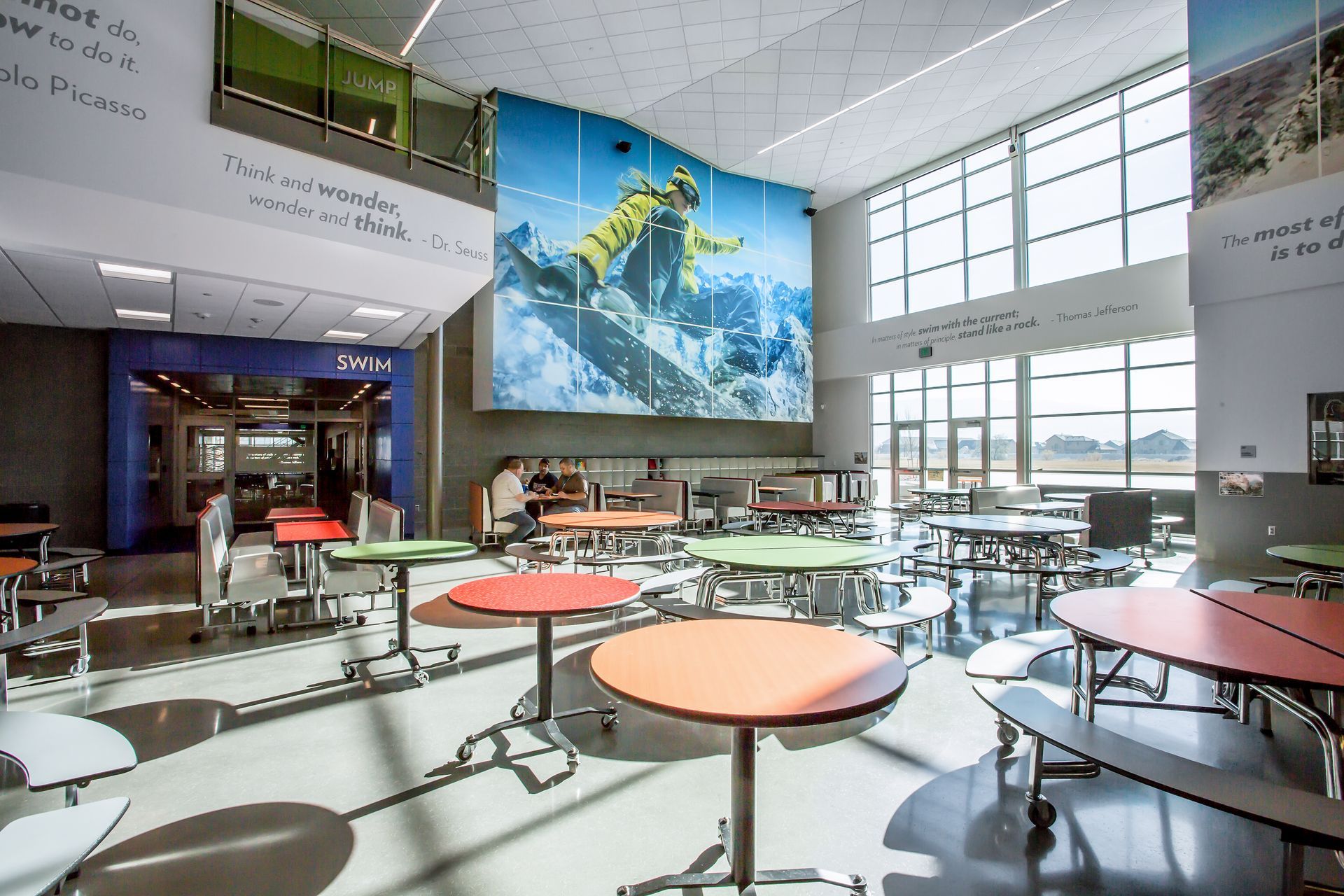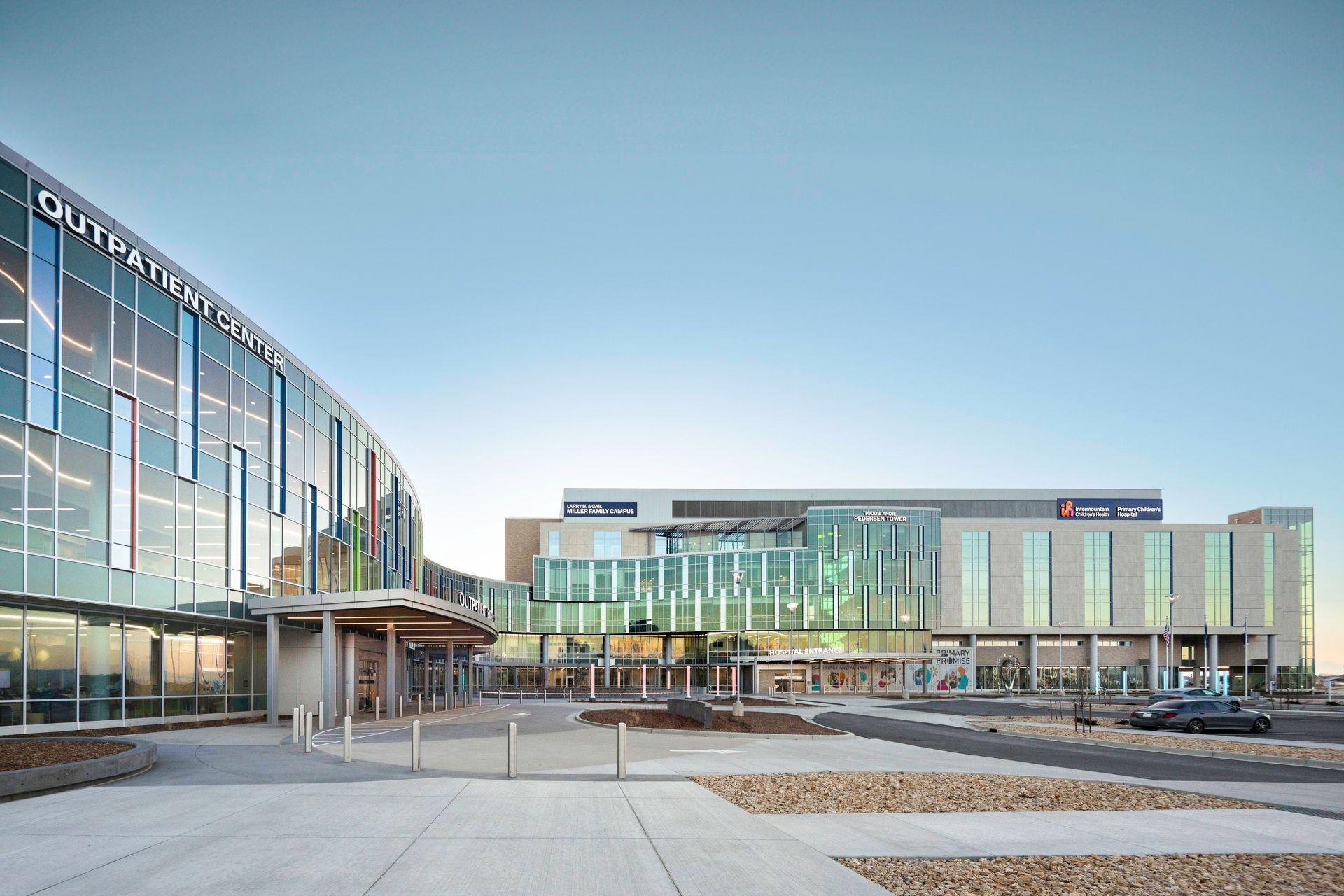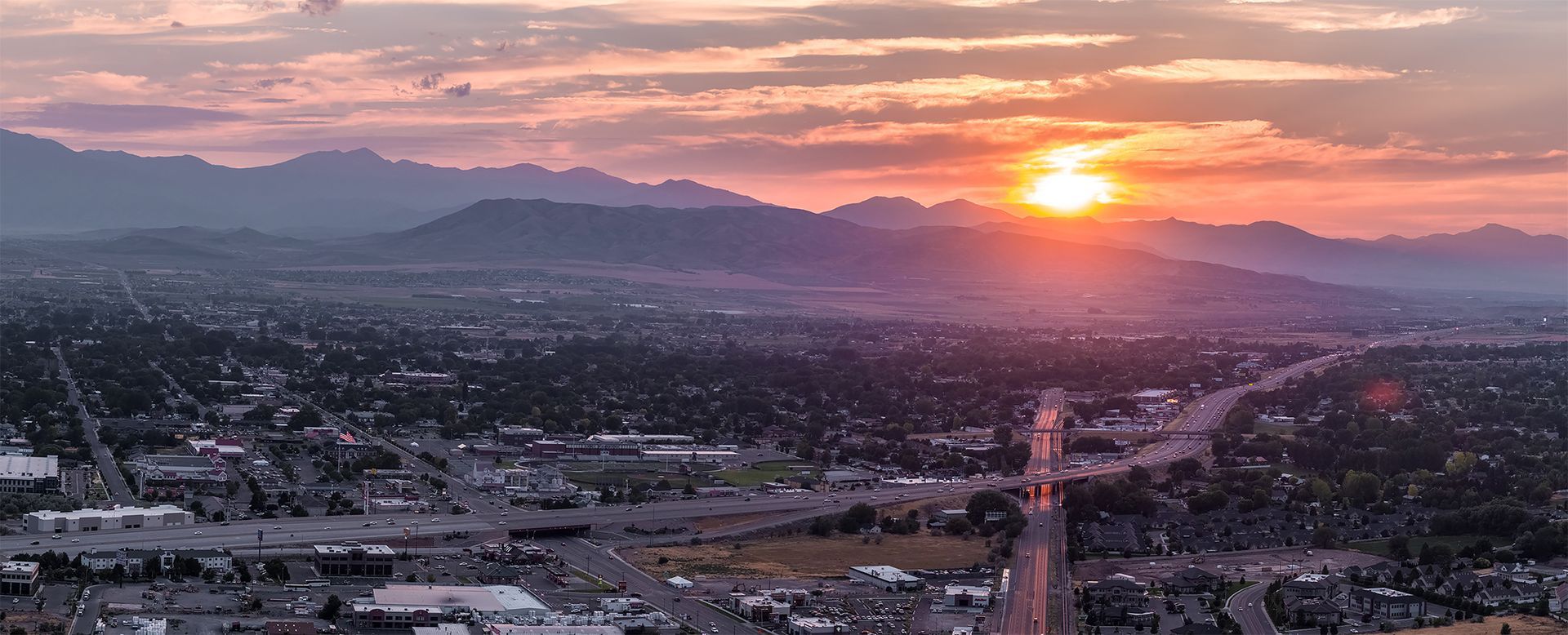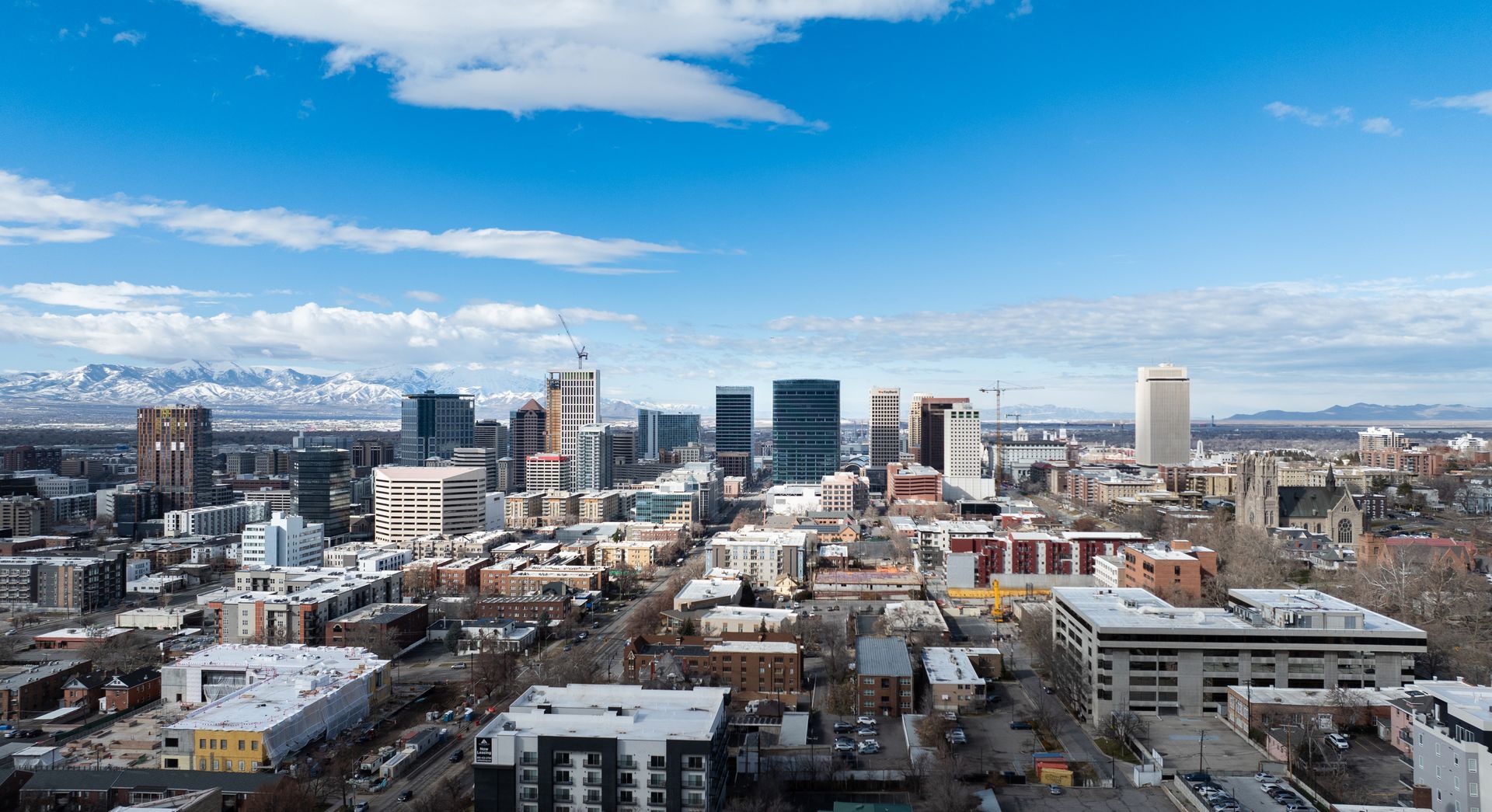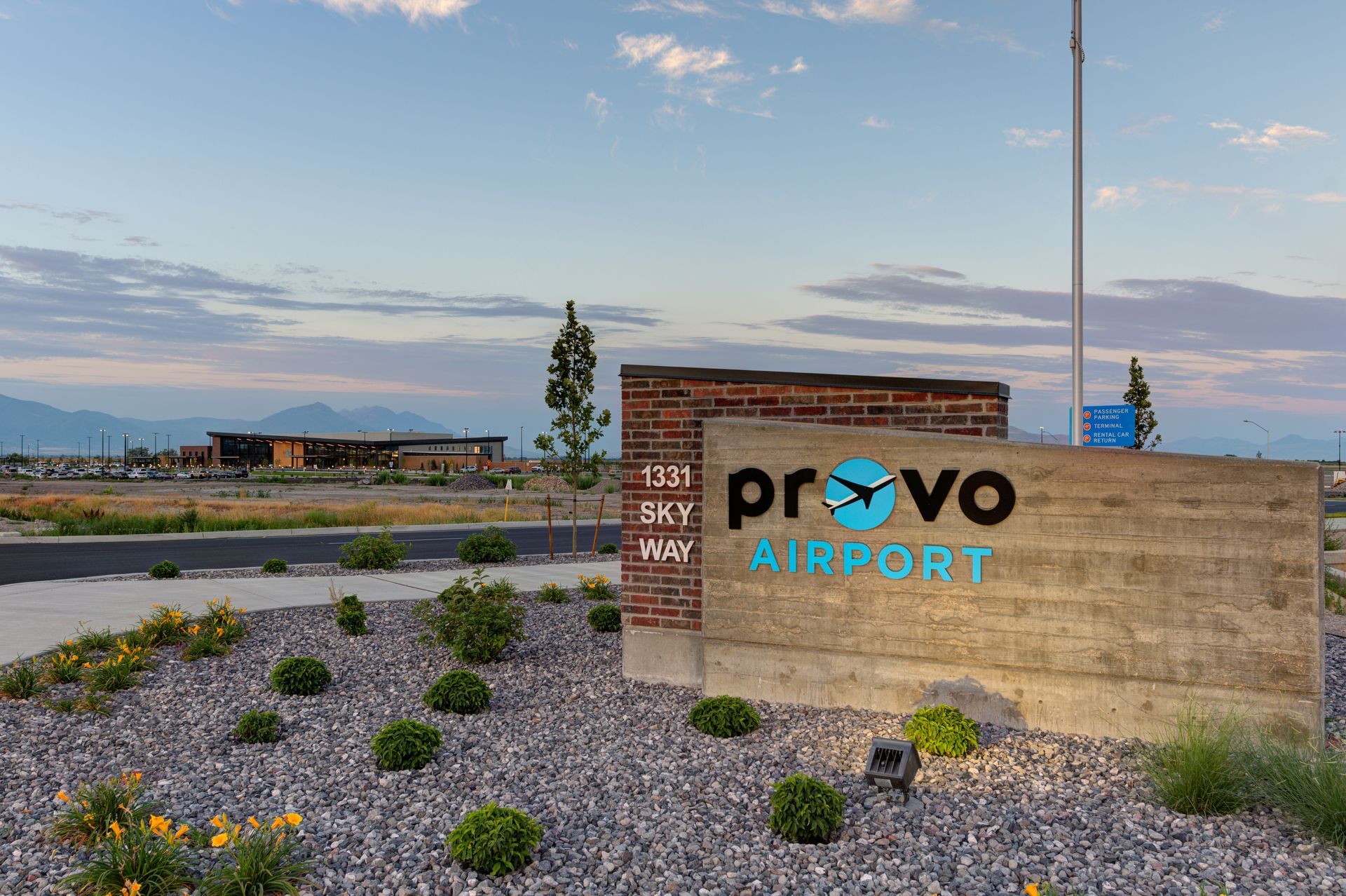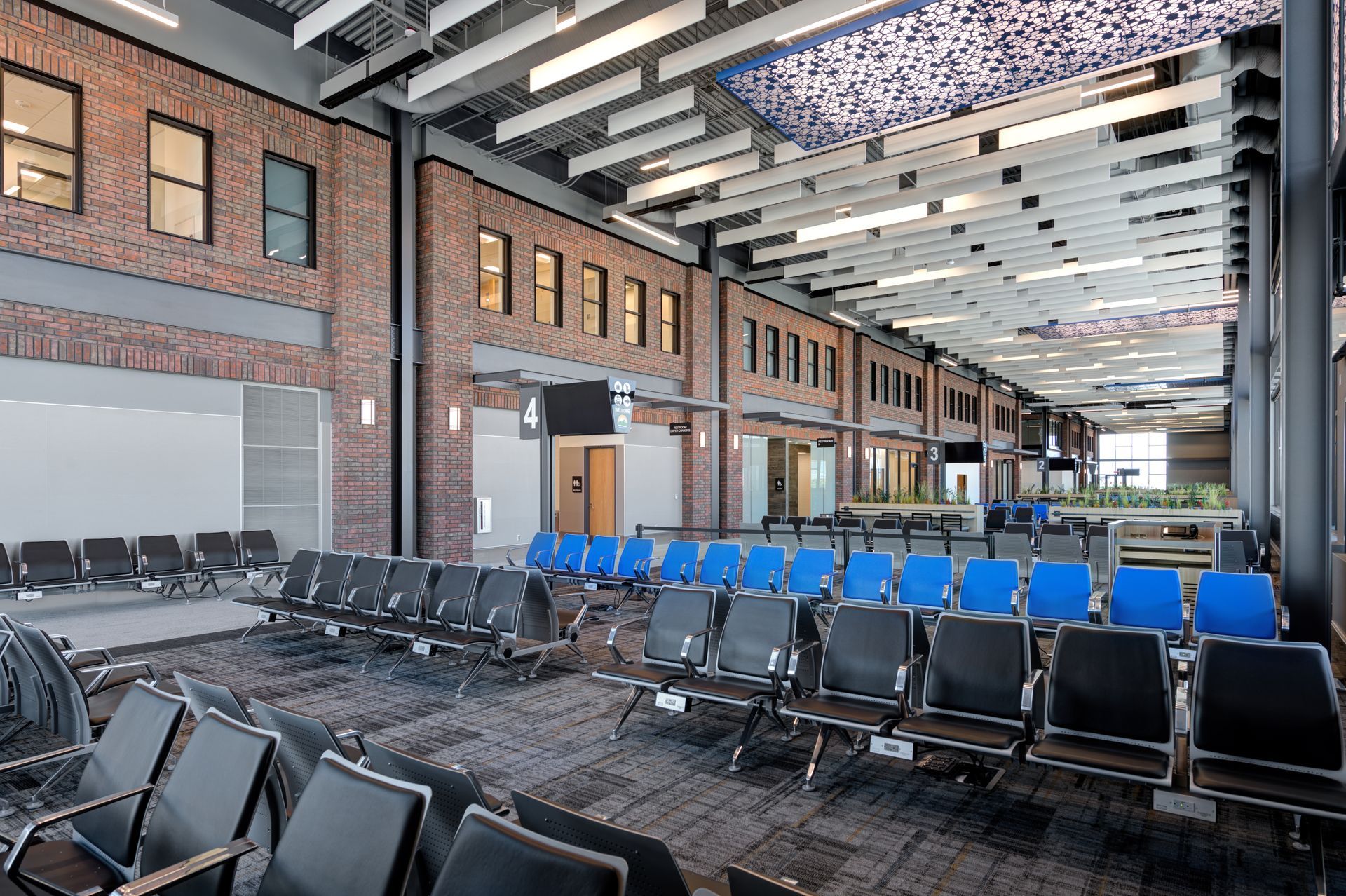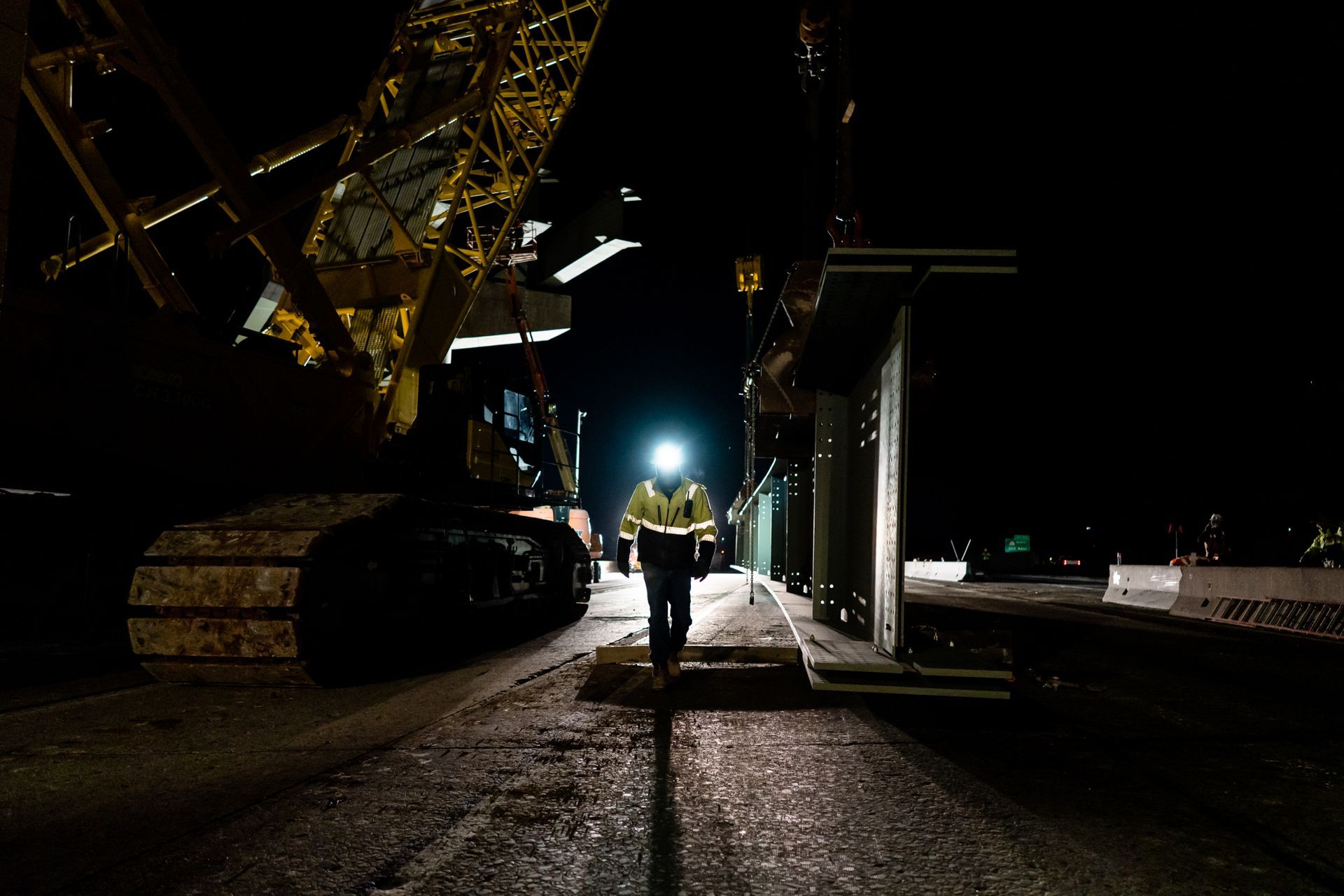Provo Airport’s new terminal boasts impressive design to welcome passengers in and out of the Utah Valley. By Taylor Larsen
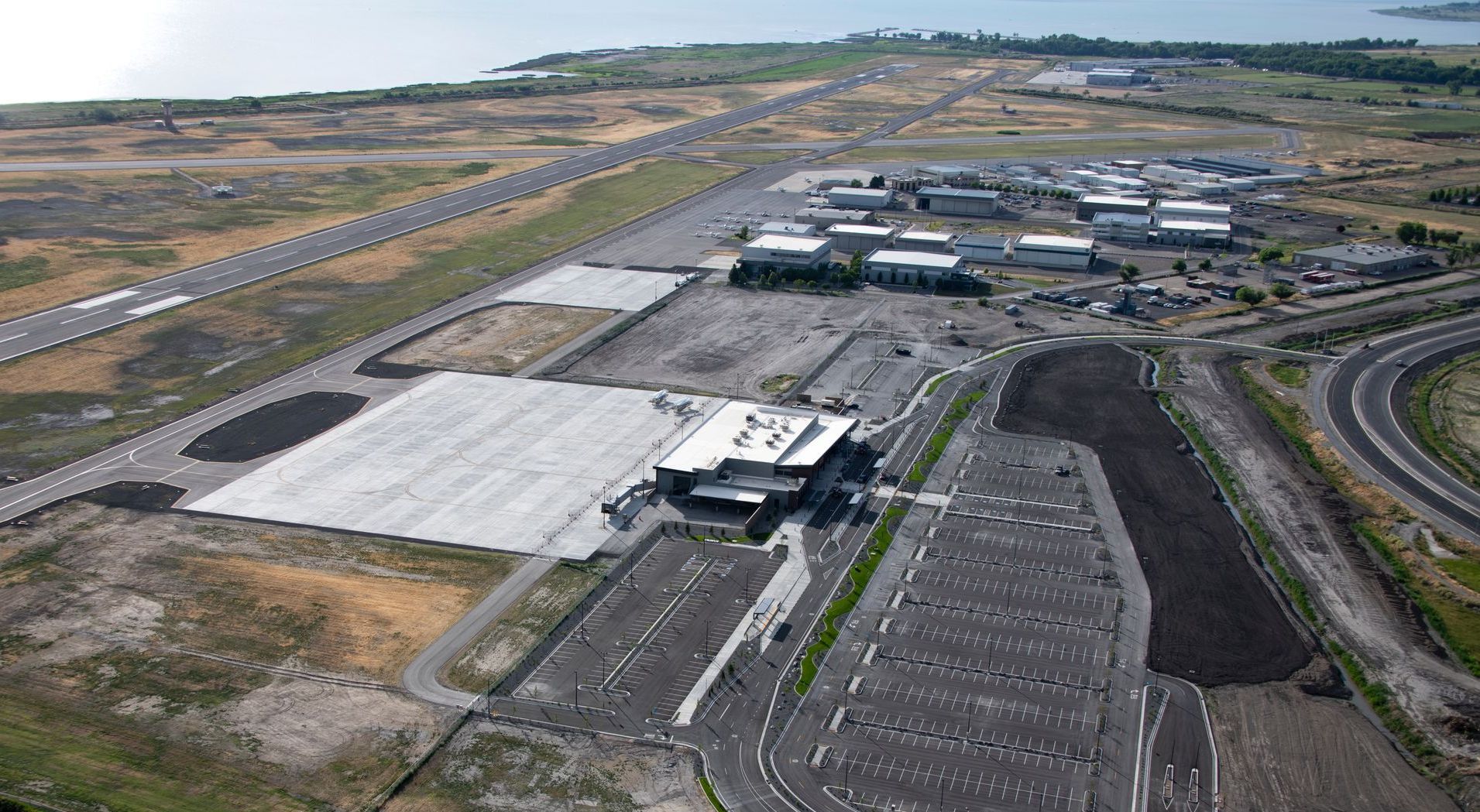
The Provo renaissance continues with the newest project, the Provo Airport terminal. It is yet another project that meets the city’s upward trajectory. The Federal Aviation Administration, the state of Utah, Utah County, and Provo City came together to fund the project, which came in at $60 million overall including the new $27-million terminal.
With the airport just a short distance from Utah Lake, building out the infrastructure would require the solid footing of best-in-class geotechnical work. According to Jeff Peterson, Vice President of Layton Construction, the soil at the airport needed some extra attention with such a high water table. But Provo officials were on top of their game, hiring out the geotechnical work to do a surcharge on the ground before construction began. That process involves piling up excess dirt at the future building site then letting it settle for a number of months. Pre-compacted, the soil on site was then ready to go for construction.
With the unique needs of the airport as a transportation hub and commercial space, building upward would also be a challenge. With site work completed, the next step was approving the necessary materials to bring forward the terminal. Those interviewed credited the officials under Mayor Michelle Kaufusi, who helped push the project along.
Electronic components—in this case data infrastructure, low voltage, and fiber equipment—were a waiting game for construction teams but arrived in time for installation. Metal studs were a hindrance to the project, with material coming in six weeks late after being stuck in port and unable to unload. Meeting the construction schedule would require a rethink.
Peterson said Layton worked with Kaizen Construction Group to remedy the problem and meet the airport’s need. Together, they devised a plan that looked to ramp up manpower and work in several areas, including interior and exterior work, at the same time.
“This plan worked so much better than expected that we were able to not only make up time on the schedule,” said Peterson, “but exceeded the original schedule time frame by two weeks.”
The project team had to combine the needs of construction with the security needs of an airport, because, Peterson said bluntly, “Not everyone can just show up [to an airport] with knives and power tools.” Erecting temporary TSA fencing outside the site moved the project forward until the security checkpoint equipment was brought in and site safety precautions ramped up.
Peterson said that TSA was a good partner on the project as they worked together to solve air travel security needs. Old equipment from the previous terminal and new equipment came near the end of the construction of the project. Trade partners went through background checks and badges to follow the TSA rules as the construction teams finished their punch list and installed the new security systems.
But this project was a part of something greater than just TSA equipment or a terminal. Provo City also built an apron, improved the surrounding infrastructure, built parking, and expanded roadways to create an airport that fit in snugly with Provo and Utah Valley growth projections. This wouldn’t be just a replacement of the existing airport, but something that would confirm the city’s status as a hub for innovation and connectivity in Utah County.
For Brian Torgersen, Airport Director with Provo City, the airport terminal was “the project of a lifetime for sure. Rewarding but exhausting."
He explained how airports are huge economic drivers all over the state. Air travel makes it easier for residents to travel and engage in business while visitors stop in to see the Beehive State and all its attractions—making the world a bit smaller, more accessible.
And it’s convenient and accessible as a building, too. A walk from the parking lot to gate can be done in a few minutes.
“We’ve had business owners tell us that it’s better than a corporate jet,” said Torgersen concerning the ease of access enjoyed by travelers at the Provo Airport. The entire area will benefit not just corporate c-suiters, but everyone looking in the area wanting to travel.
It is a building playing homage to Provo in so many ways. Robert Piñon, Vice President at MHTN Architects, said the most important message the city wanted to provide in the airport was to embrace the city tagline: “Welcome Home.”
According to Piñon, the alignment of the terminal to the nearby geography is one of many moments that tie the building to location. He said that, as users exit the secure side, giant window panels purposefully frame the Wasatch Range to bring a bit of magic to arrival.
Piñon even smiled about how the design framed the famous Y Mountain. “I’m a University of Utah grad, but that’s pretty cool,” Piñon said, teasing about the schools’ rivalry while speaking to how the project team aimed to embrace Provo’s tagline
It’s a welcome home indeed.
On approach, a gentle slope to the whole building gives it a winged shape and, as Piñon described, a modern take on travel and movement.
Inside the terminal, perforated metal panels surrounding tall glass give views out to Utah Lake to the west. Piñon said it engages visitors as they come to the building before they board the planes. “Windows, light, views,” he described. “It’s like waking up after a long trip.”
Peterson was most enamored by how the design amplifies the views from the second story, which looks out not just into the distant wonders. It also frames the waiting and boarding areas, giving people an extended view of loved ones traveling and the planes coming in and out of tarmac.
The friendly heights and scale of the building combines with the materials to a modern and inviting effect. Piñon mentioned the amount of design work that went into creating brick storefronts throughout to give the airport a Provo touch. Black steel window mullions connect back to the city’s architectural history while black steel columns nestle between masonry columns and give the interior its Center Street feel. The warmth from wooden signs at entry combine with hanging clouds and open ceilings to create volume and add to the sense of place.
Functionally, services in the building include the usual for an airport: ticket counters, security screening, baggage claim, four gates—one with the automated ramps that are totally enclosed and the other three with apron loading.
Amenities include a family lounge, business lounge, and rental car space, as well as a concession area and retail space for Provo’s very own eclectic eatery, Guru’s Cafe.
The building is designed for two more wing expansions in the concourse, so the project team built for anticipated growth and more gates to the north and south. Since the water table around the site was so high, the project team found another way to deliver bags to and from airplanes by baggage carts. In future expansions, the baggage transport systems will revert to the traditional way through conveyor belts going under elevated structures. According to Torgersen, expansion may be coming sooner than initially planned due to increased demand from airline providers.
Peterson was excited for Provo City and how it would embrace the airport and the other municipal buildings that have taken the city to newfound heights. He described Provo City officials as some of his favorite owner representatives.
“[Provo City] understands construction stuff and that things may not be perfect,” he said. “The way they approach the process in good faith, while also demanding accountability from the project team, makes for a worthwhile process.”
Engaged owners and construction and design teams made for a great project and has created a terminal that can meet Utah Valley’s present and future demands.
“Kudos to the team, owner, architect, and subs,” Peterson said. “I’d take them all again. […] I’d like to do 100 more of these projects.”
Provo Airport
Location: 1331 Sky Way, Provo, Utah
Cost: $27,000,000
Delivery Method: CMCG
Square Feet: 65,000
Owner: Provo City
Owner’s Reps: Brian Torgersen, Jared Penrod
Developer: Provo City
Design Team
Architect: MHTN Architects
Civil: JViation
Electrical: Envision Engineering
Mechanical: VBFA
Structural: Reaveley Engineering
Geotech: RB&G Engineering
Construction Team
General Contractor: Layton Construction
Concrete: Kenny Seng Construction
Plumbing: Mechanical Systems & Service
HVAC: Mechanical Systems & Service
Electrical: Wilkinson Electric
Masonry: AK Masonry
Drywall/Acoustics: Kaizen Construction Group
Painting: Bruin Painting
Tile/Stone: Midwest D-Vision Solutions
Carpentry: N/A
Flooring: Midwest D-Vision Solutions
Roofing: Superior Roofing
Glass/Curtain Wall: B & D Glass
Waterproofing: Waterproofing West
Steel Fabrication: WOI Steel
Steel Erection: J-6 Steel
Excavation: Kenny Seng Construction
